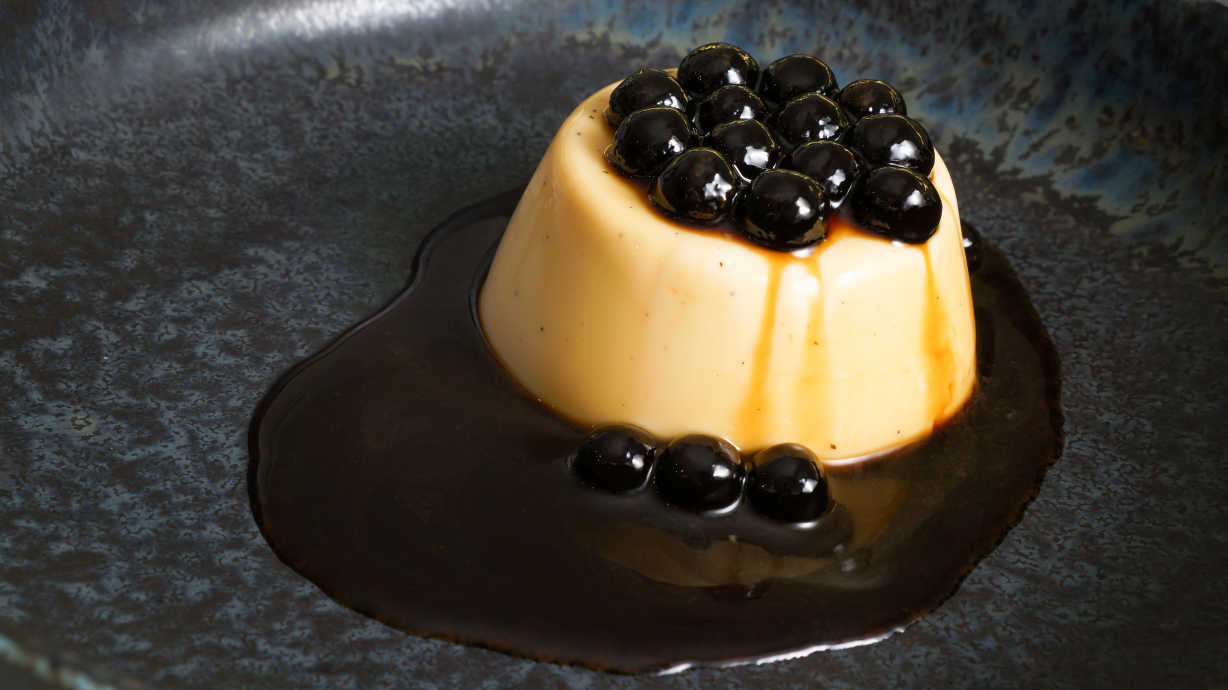Master the Basics: Dark Chocolate Bonbon Recipe for Perfect Treats
Featuring a high quality and smooth ganache you can make at home.

Published: August 16th, 2021 | Last Updated: January 6th, 2025
Bonbons are single bites of delight condensing interesting flavours and textures into a single piece. It is made of a chocolate shell which encases a flavourful filling. There are countless flavour and element combinations when making bonbons.
Bonbons are a real test of a chocolatier's skill. It requires a series of precise steps and techniques to achieve perfect results. A perfect result is a shell that is glossy, has no bubbles, is thin and has a delicate snap. The ganache should be smooth and melt in your mouth easily and not be too sweet. The cap should be flat, with no streaks, bubbles or holes and it should ideally be the same thickness as the shell. Check our guide which includes over 30 tips to perfecting chocolate bonbons at home.
Bonbons are a great gift and can be customised to suit the tastes of the recipient.
This recipe is designed for making dark chocolate bonbons at home, using ingredients that are easier to source and not too uncommon in desserts, while still maintaining a luxurious and high quality taste and texture you can expect to find in a high quality chocolate shop. It features a ganache that is a level up from the basic 1:1 cream to chocolate ratio using various sugars and butter for a more tender mouthfeel. If you'd like to learn more about the various roles that ingredients play, we explain the effects of every element in a ganache here. It also includes a handy calculator that allows you to see the composition of a ganache recipe.
Ingredients
Moulded chocolate shells
- 600g dark chocolate
Dark Chocolate Ganache for Bonbons
- 150g heavy cream (35% fat)
- 30g invert sugar / trimoline (substitute with glucose syrup if unavailable)
- 30g glucose syrup
- 250g couverture dark chocolate pieces (callets, feves, buttons, chopped chocolate)
- 35g unsalted butter (at room temperature)
Moulded chocolate caps
- 300g dark chocolate
Method
Moulded chocolate shells
- Temper chocolate using your favourite method (we like to use the seeding method)
- Fill the mould cavities completely with melted chocolate.
- Scrape excess chocolate off mould.
- Tap the mould on a surface to ensure the chocolate fils the cavity and there are no air bubbles.
- Turn the mould upside down and empty out the excess chocolate onto a baking sheet while tapping the mould with the spatula.
- Scrape the excess off the mould.
- Allow the shells to set completely.
Dark Chocolate Ganache
- Prepare chocolate in a tall narrow canister (to be blended with a hand blender later).
- Bring the cream, invert sugar and glucose syrup to 80°C or just before simmering
- Pour hot cream over chocolate pieces.
- Allow chocolate to melt in the residual heat of cream for about 1 minute.
- Blend with a hand blender until smooth.
- Add butter and blend again with a hand blender until smooth.
- Pour into a piping bag, seal and allow to cool to 30°C on a cool countertop. Flip the bag every minute or so to cool the bag evenly
- Pipe into moulds, leaving a gap of about 2 mm from the top.
- Lightly tap the moulds on a surface to level out the ganache.
- Allow to set at room temperature (max 26°C, but ideally lower) until completely set (ideally overnight)
Cap the bonbons
- Temper chocolate using your favourite method.
- Place a small amount of tempered chocolate to cover the ganache and fill the remainder of the cavity.
- Scrape off the excess chocolate and allow bonbons to set completely.
- Once set, flex the mould (like an ice cube tray) and the carefully tap the bonbons out by tapping the mould on a surface. Do one tap at a time and make sure that the bonbons that come out are moved away before tapping again.
FAQ
Why is invert sugar added to the recipe?
Invert sugar allows the ganache to stay soft and smooth for a longer period. Without invert sugar, the ganache becomes more dry and crumbly over time. Over time, the sugars in the ganache can start to crystallize, but invert sugar will help prevent that. Invert sugar is also more sweet than regular sugar so adding too much could make the ganache overly sweet.
What can I use to substitute invert sugar?
Invert sugar can be substituted with glucose syrup which is available in most supermarkets. It has a similar anti-crystallization effect as the invert sugar but is less powerful and is also less sweet.
What couverture dark chocolate can I use?
This recipe was formulated using 54-55% dark chocolate. Other percentages of dark chocolate can be used but the taste and texture will be slightly different. Higher percentages of dark chocolate contain more cocoa solids and cocoa butter making the ganache more thick and less soft.
Get the latest recipes and insights!
Subscribe to our mailing list for the latest dessert recipes, tips and advice.





